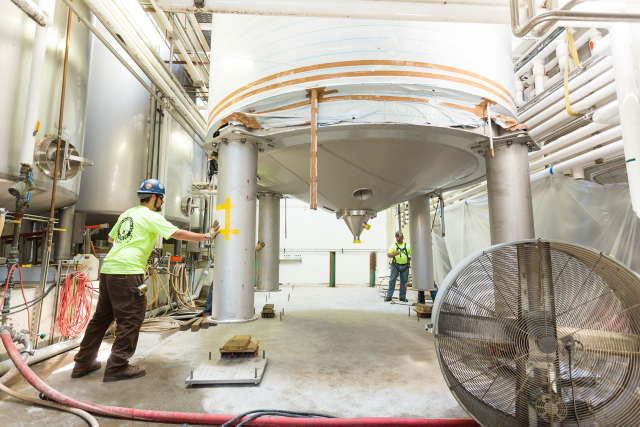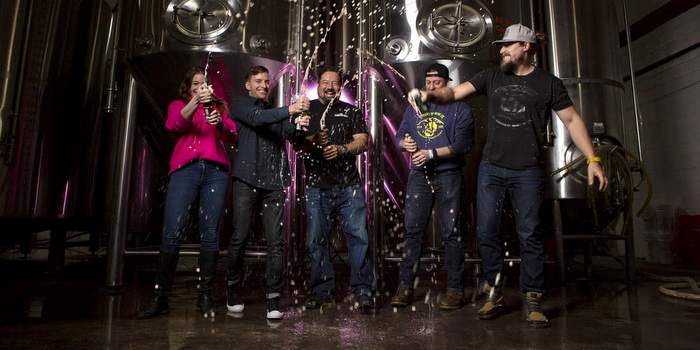
The decision to expand your brewery is a big one. You’ve reached a point where the demand for your beer far outweighs your brewing capacity. It’s time to take the leap into making your brewery bigger and to borrow money to finance the project. Borrowing money means working with banks. Working with banks requires a working knowledge of how loans work. This article will help you understand basic loan terminology and different types of loan structures, so that you can get the best loan arrangement possible.
Brewery expansion financing basics
- Basic loan terms
- Types of loan structures
- Example of a brewery expansion loan structure
- Basic loan terms
As the name implies, some of these terms are very basic and may already be common knowledge for you. Skim through the list and skip over anything that’s already understood.
Loan to value. The amount the bank will loan you is related to the value of the asset they are lending against. For example, if you buy a $2 million building for your brewery, the bank won’t lend you the whole thing, but will keep the loan to value ratio at about 80 percent. So, they will lend you 80 percent of the $2 million value, or $1.6 million. The remainder is on you to come up with, in the form of equity.
Principal. This one was always hard to spell — was it principle or principal? Back in elementary school they told us that your school principal was your ‘pal,’ but it turns out that the principal on your loan is also your ‘pal.’ The principal is the amount borrowed on the loan, or amount still outstanding.
Interest. If you want to make yourself sick, look at how much interest you will pay over the course of the loan. Interest is the amount you pay for the privilege of borrowing money.
Interest rate. The interest rate is the cost of borrowing expressed in a percentage. The interest rate gets multiplied by the outstanding principal to determine how much interest you’ll pay each month. There are a variety of interest rate benchmarks that are used to establish the rate — the prime rate, LIBOR or the bank’s internal cost of funds rates. Rates may be expressed as “prime plus 125 basis points,” for example. A basis point is one hundredth of a percent. So if you want to sound like a banker use words like “basis points” a lot. Your credit rating, collateral and a variety of other factors will influence the interest rate you’ll get.
P&I. Principal and interest. It makes up the amount of your monthly payment on the loan. Just like on your home mortgage, the monthly payment stays the same each month, but the amount of P&I fluctuates based on the amount of remaining principal. Early in the loan more of your payment goes to interest, while later in the loan when the principal is lower, more goes to principal.
Term. The length of time on the loan. For example, if you buy a delivery truck, the bank gives you a 5-year term loan.
Amortization period. The time period to repay the loan. Sounds like the same thing as the loan term, doesn’t it? Sometimes it’s different; let’s use an example. If you borrow that $2 million for the warehouse, the bank will calculate your payments based on a 20 year amortization schedule. This spreads the payments over a longer period of time and makes them easier to handle. However, the bank won’t fix that interest rate for 20 years, they’ll only fix it for, say, seven years — the loan term. So, the amortization period is 20 years, but the loan term is seven years. Typically, after the seven years are up, the loan will renew but at a different interest rate.
Amortization schedule. Not many folks outside banking and finance use this word. Simply put, an amortization schedule is a re-payment schedule. It’s a listing of all the payments you will make on the loan, and how much is allocated to principal and interest each time you make a payment.
Covenants. These are promises you make to the bank in exchange for the loan. The bank wants to make sure you not only pay down the loan as you agreed to do, but they want to ensure you maintain certain financial benchmarks along the way. We’ll cover this in more detail in another post, but suffice to say, be very careful with covenants. The bank does not take it lightly when you break a promise.
Types of loan structures

A loan structure is simply the way the loan is put together – the interest rate, re-payment term, covenants and collateral. Many of the terms listed above serve as the building blocks of the loan structure. There are as many different types of loan structures as there are banks. For our purposes we will focus on four loans that are most common.
- Working capital line of credit
- Equipment line of credit
- Equipment loan
- Commercial real estate loan
- Working capital line of credit





Leave a Reply
You must be logged in to post a comment.